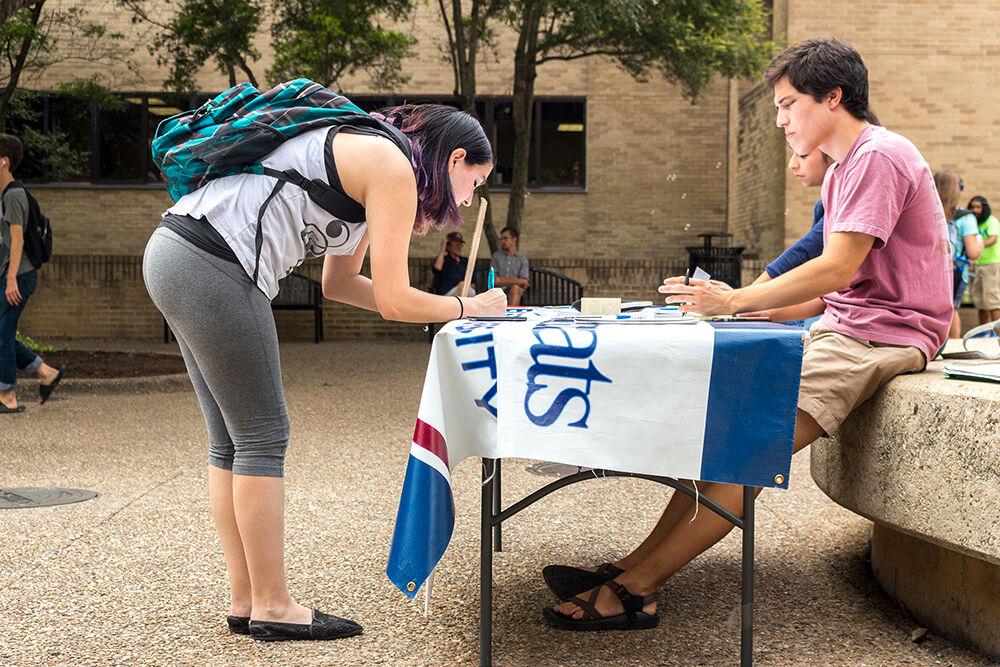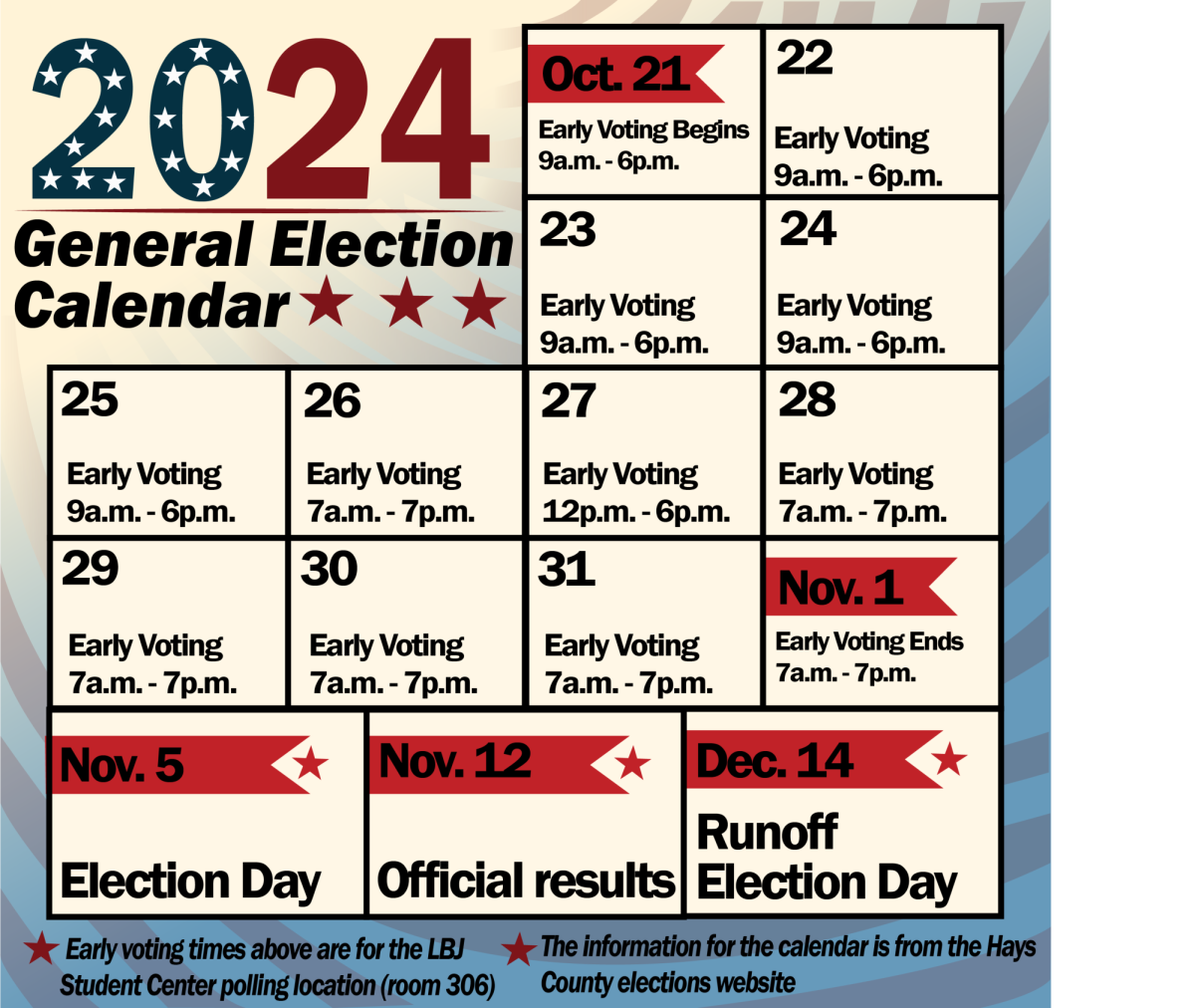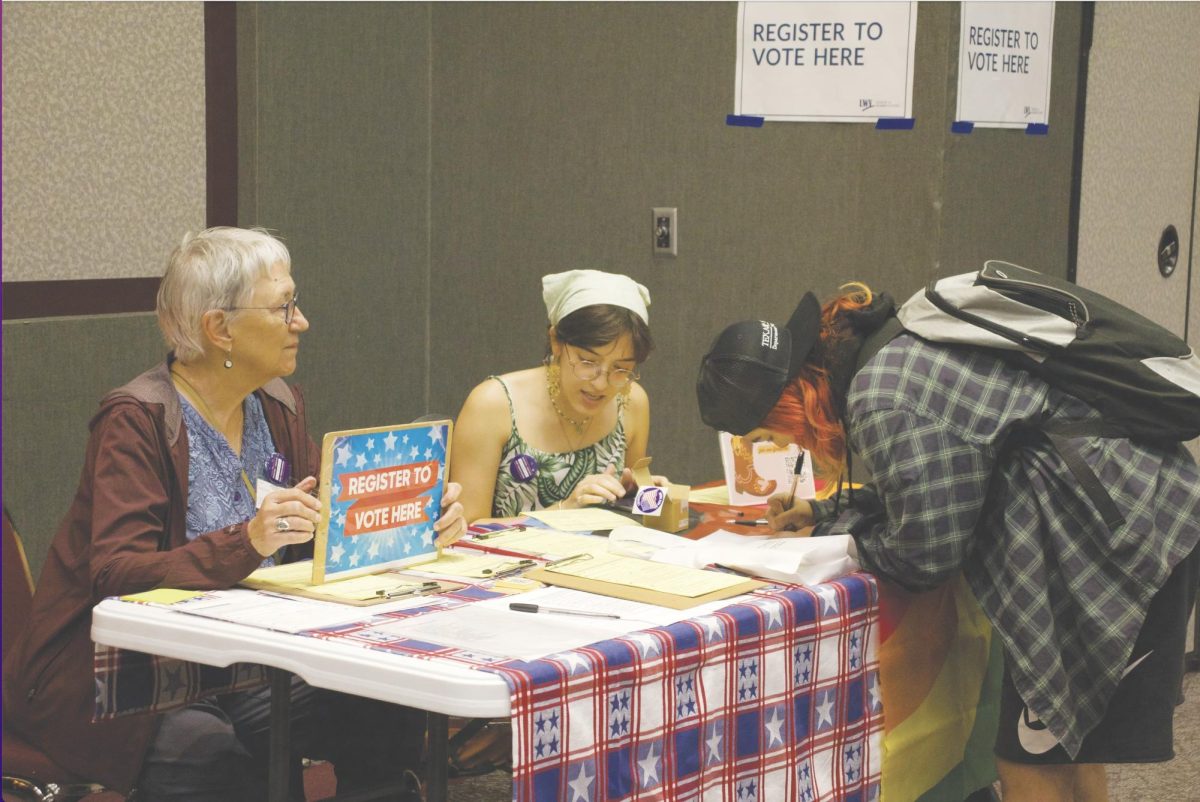Available data for voter demographics provided by student affairs at Texas State indicate that minority participation in Student Government elections far outnumbers minority political engagement on the national stage.
While there is no official record of voter demographics during campus elections, the amount of students who accessed the voting website during the last election is almost identical to the number of votes tallied. 4,461 students accessed the site, while 4,328 total votes were cast according to.
Taylor Brimer, election board chairman and engineering technology senior, said the lack of data collected is due to a lack of effort to be consistent through changing administrations.
“You gotta remember this is a student-run thing, students are only here for four years so there’s not that sense of longevity,” Brimer said.
Matt Flores, assistant vice president for university advancement-communication, said he believes the data accurately represents the constituency of Student Government.
“It’s the number of students who accessed the voting system,” Flores said. “My take is that this is a fair representation in terms of the breakdown of minority groups that voted.”
The topic of inclusion in elections has long been controversial, often provoked by large discrepancies between the participation of minority and white voters. While national engagement of minority groups in elections has increased steadily over the last 20 years, white voters still make up around 70 percent of the total national electorate.
By contrast, white students at Texas State made up about 42 percent of the population who accessed the voting system during the last Student Government election. This is consistent with a higher proportion of minority groups being represented in the data. Hispanic students represented 32 percent of the engagement, which is 23 percent higher than the about nine percent who constituted the national vote. African-American students represented almost 19 percent of engagement compared to 12 percent nationally.
The difference in engagement can be attributed to the diversity of the university, and not higher levels of engagement by each demographic. While African-American students take a larger share of engagement than their portion of the population, most other demographics take a share that is proportional to their percentage of the total campus population.
Flores said the data correlated closely with campus-wide demographics.
“(It’s) a pretty good reflection of the campus make up,” Flores said. “When I say that 42 percent of the students who accessed the voting system were white — we’re about 48 percent white as a campus, so its pretty close. Likewise, Hispanics were 32 percent of who accessed the voting system and our campus is 33 percent or 34 percent Hispanic.”
Emily Leyendecker, computer science senior, said that she thought accessibility was a contributor to the amount of student engagement.
“I feel like it’s because they don’t need a voter card really to vote here,” Leyendecker said. “It’s a lot easier to vote here in student government, it’s a lot easier to be directly involved versus national government.”
The location of the voting stations for the upcoming Student Government election will be on the second floor of the LBJ Student Center across from Wells Fargo bank.
Categories:
Statistics show higher count of minority engagement in last Student Government election
February 14, 2018
0
Donate to The University Star
Your donation will support the student journalists of Texas State University. Your contribution will allow us to purchase equipment and cover our annual website hosting costs.
More to Discover













